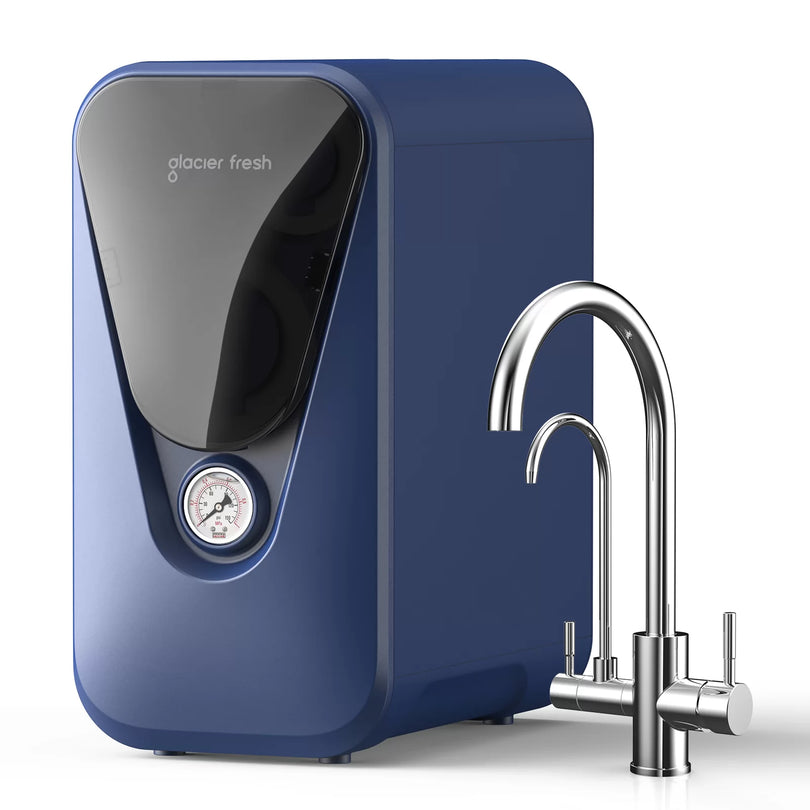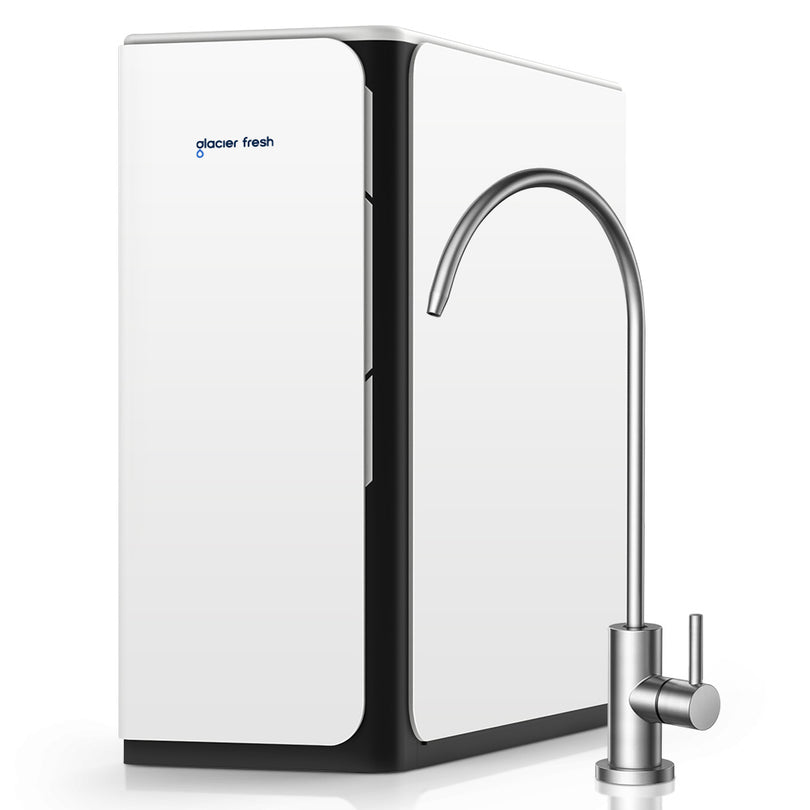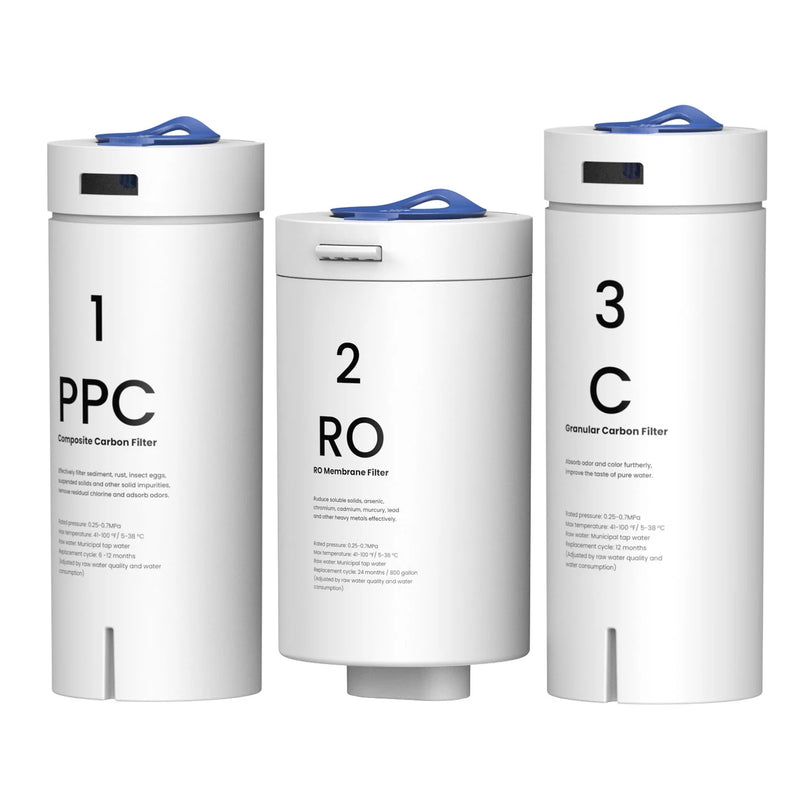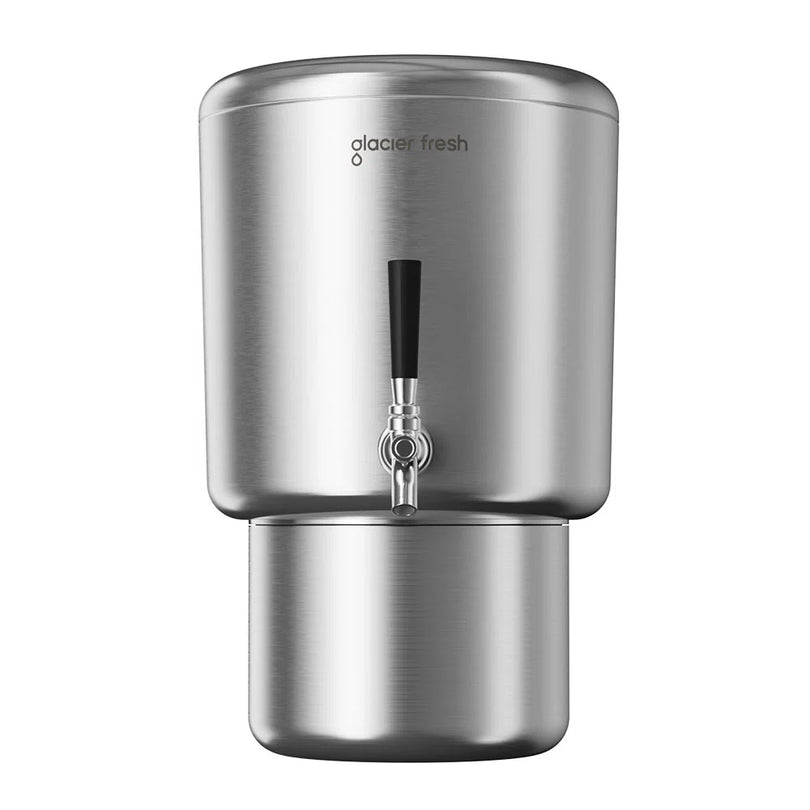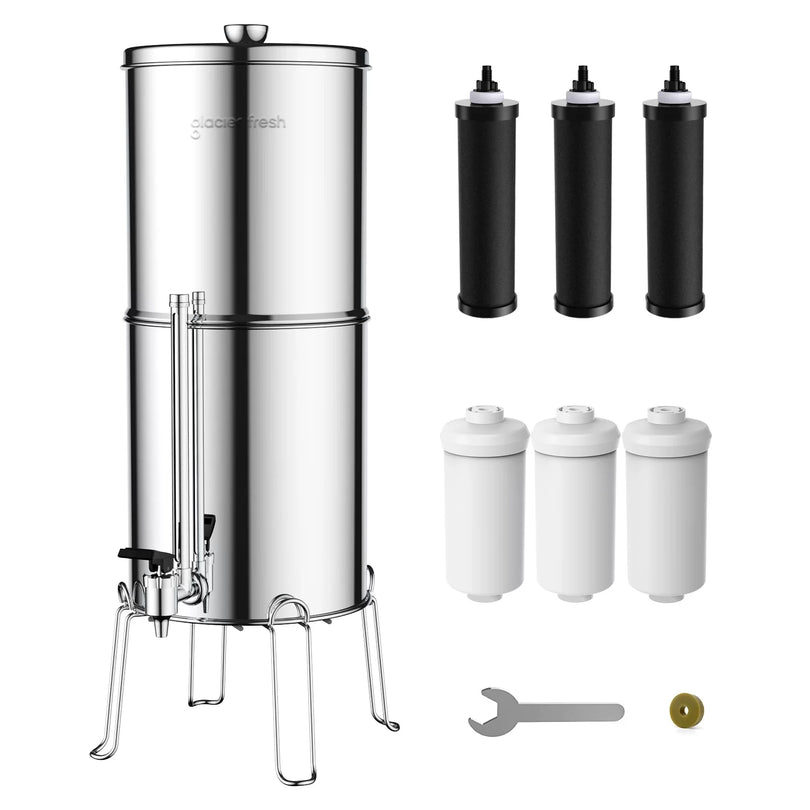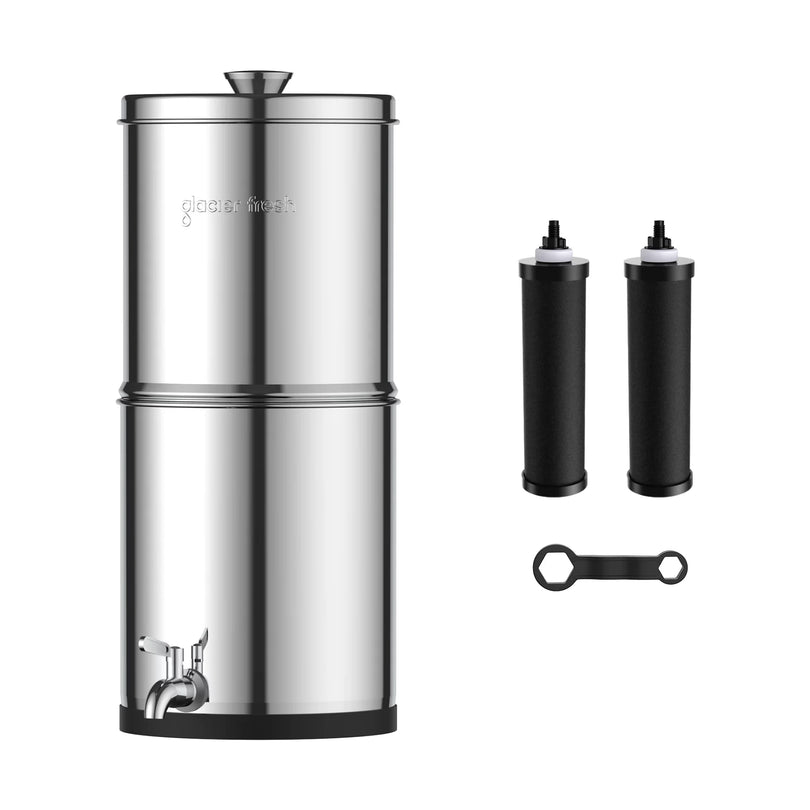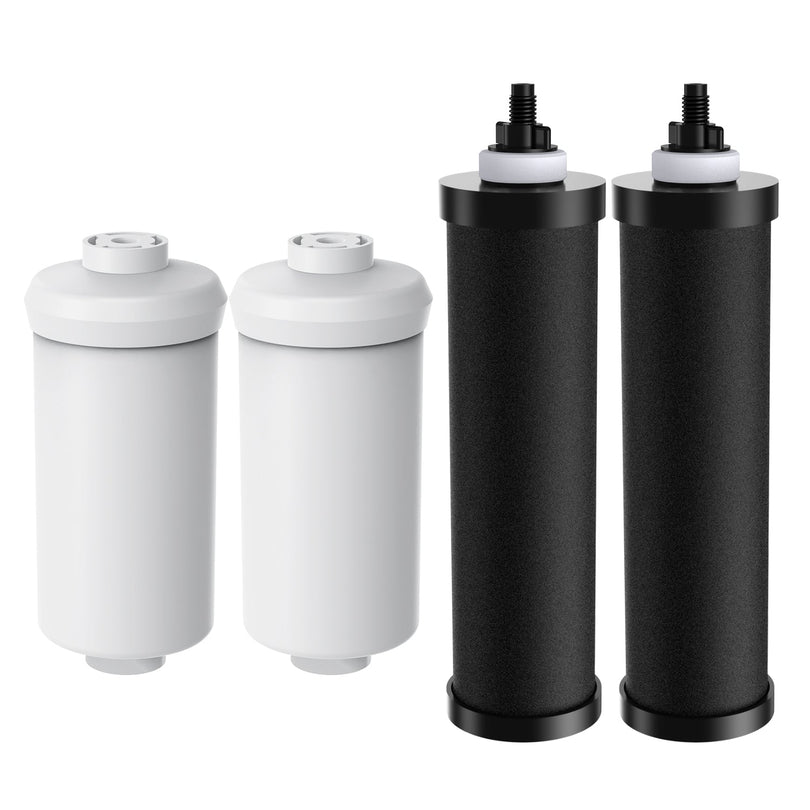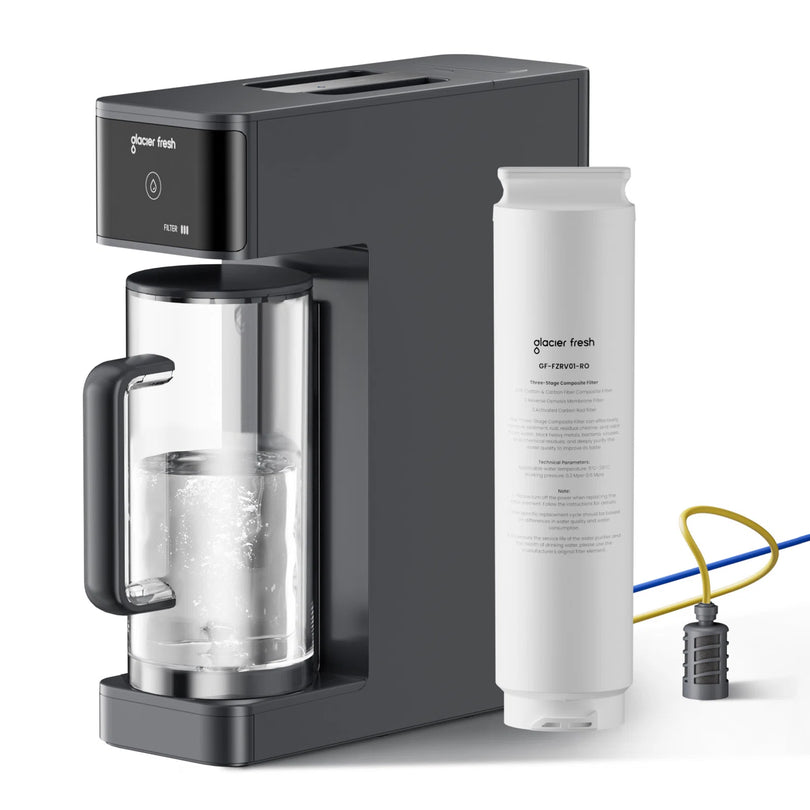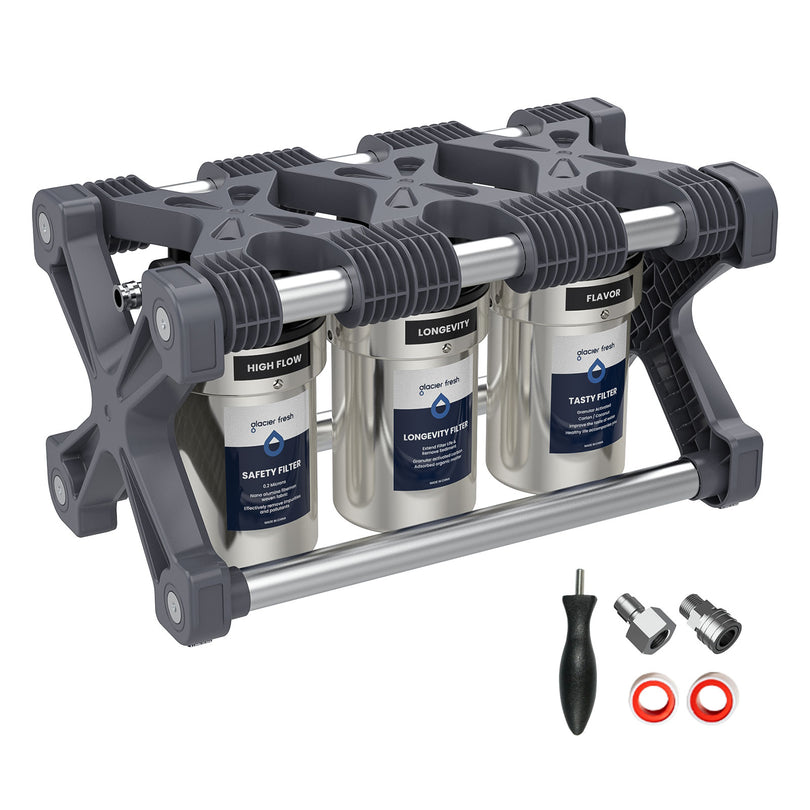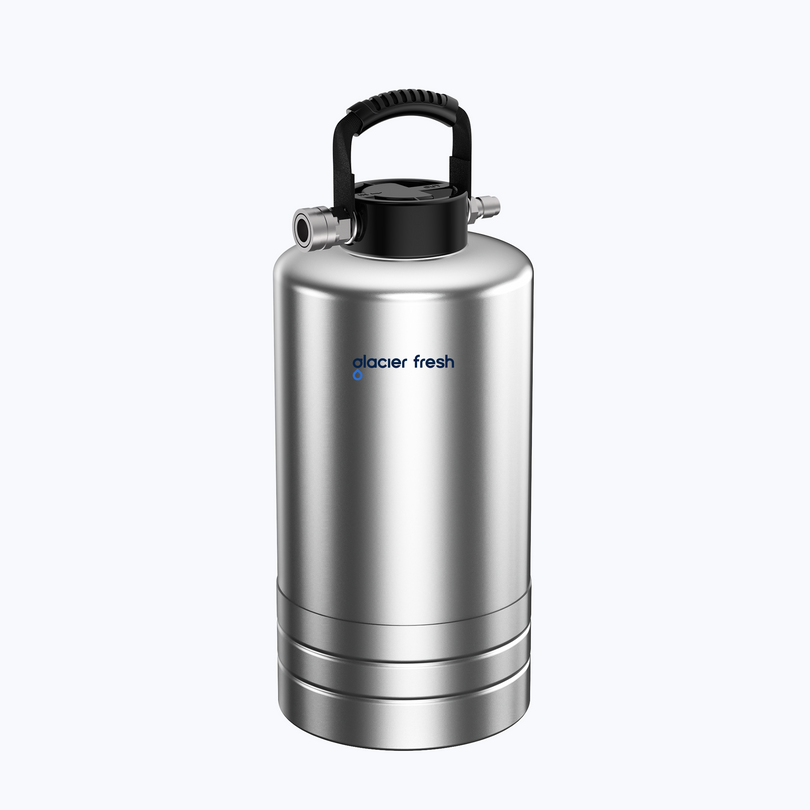Table of Contents:
What Are Under-Sink Water Filters?
How Does an Under-Sink Reverse Osmosis System Work?
What Are the Main Components of an Under-Sink RO System?
What Contaminants Does an Under-Sink RO System Remove?
How Do I Choose the Best Under-Sink Water Filter for My Home?
Final Thoughts
For most households, clean drinking water is a top priority, and one of the most efficient water filtration systems for achieving this is an under-sink reverse osmosis system. These are solid systems that have great water filtration capabilities and are very easy to use and integrate directly under your kitchen sink for purified drinking water coming right out of your faucet.
In this guide, we’ll explain what an under-sink water filter is, how it works, the main components involved, what they filter out, and how to find the perfect one for your home.
What Are Under-Sink Water Filters?
Under-sink water filters are small filtration units that are placed under the sink in the kitchen. Their task is to strip impurities from tap water before it’s delivered to your faucet. They hook directly up to the cold-water line and usually have their own tap that is placed on your sink.
There are multiple kinds of filters you can install under the sink, but by far the most advanced and effective choice is the under-sink reverse osmosis system. This system utilizes a multi-stage process to make your water clean, which includes passing water through a semi-permeable membrane to eliminate noxious contaminants.
Unlike pitchers or faucet attachments, under-sink models offer a long-term, low-maintenance solution. After being installed, they can automatically operate and provide clean water whenever you want.
How Does an Under-Sink Reverse Osmosis System Work?
Standard under-sink reverse osmosis systems work by pressurizing your tap water and pushing it through multiple filtration stages. The RO membrane is the heart of the system, which is designed to remove the smallest impurities. This is how it simply works:
Step 1: Pre-Filtration
Firstly, the tap water runs through one or more layers of sediments and carbon filtering. They eliminate large contaminants like sand, rust, and chlorine, which are harmful to the RO membrane.
Step 2: Reverse Osmosis Membrane
Then the water is forced through the semi-permeable membrane. This stage eliminates all the microscopic contaminants, including lead, fluoride, nitrates, arsenic, etc.
Step 3: Post-Filtration (Polishing)
Water then typically goes through a second carbon filter (which is usually a fine carbon device) post-RO membrane to further enhance the taste and remove any residual odors.
Step 4: Storage and Dispensing
Clean drinking water is then stored in a tank, and when you turn on the tap, you get that fresh water immediately.
In recent models, such as the tankless RO system, your water is filtered dynamically as you need it (instead of being stored), saving space and eliminating the risk of bacteria growing in standing water.
What Are the Main Components of an Under-Sink RO System?

An under-sink reverse osmosis (RO) system has a number of core components that work together to treat your tap water very efficiently. While these parts are hidden under the sink, all of them play an important part in the filtration process.
The first stage of the system is pre-filters, which are typically sediment and activated carbon. These are filters that remove larger particles like lead, dirt, rust, and chlorine in the water. This stage prevents the main RO membrane from contaminants and increases the system’s performance.
After that is the reverse osmosis or RO membrane, which is the primary component of the system. It has microscopic pores that let only pure water molecules pass through while keeping out all the harmful materials, including heavy metals, nitrates, and all types of bacteria.
The clean water is then stored in a tank under pressure or, in tankless models, immediately delivered through the tap. Space efficiency is another reason for the rising popularity of tankless systems, which filter water as it comes through the water line into your house.
What Contaminants Does an Under-Sink RO System Remove?
One of the most common reasons that people opt for under-sink reverse osmosis systems is their proven ability to eliminate a broad range of contaminants from drinking water. These systems serve to decrease or eliminate:
-
Heavy metals such as lead, arsenic, mercury, and chromium
-
Nitrates and nitrites, which are commonly found in farming areas
-
Fluoride, a chemical that is often added to public water systems
-
Disinfectant agents like chlorine and chloramine
-
PFAS and VOCs ─ industrial waste pollutants
RO is one of the most effective solutions available when it comes to different filtration methods. That’s why so many families like them more than simpler options, such as pitchers or faucet-mounted filters.
A countertop reverse osmosis water filter system may be a better option if you have limited under-sink space or live in a rental property. They offer equivalent filtration, with the added benefit of being portable and requiring no plumbing changes.
How Do I Choose the Best Under-Sink Water Filter for My Home?
The best under-sink reverse osmosis system may vary based on your specific dynamics, quality of water, and kitchen structure. Here are some tips for choosing the right one:
Water Quality in Your Area
You should ensure the system is certified to eliminate these substances if your tap water contains more than the acceptable limit of any contaminants, such as fluoride or lead.
Tank vs. Tankless Design
If you are tight on space, opt for a tankless RO unit. These systems use less space, allow for a quicker flow, and conserve more water.
Filter Replacement and Maintenance
Choose models that have easy-to-change filters and indicators for maintenance reminders. Many of the newer systems even have digital monitors for filter life.
Certifications
Select systems certified by organizations such as NSF/ANSI, which subject systems to vigorous testing to ensure they meet performance standards.
Installation and Space Requirements
Certain models are larger than others because they have a number of filters and tanks. Measure your space before you purchase anything, always.
Flow Rate and Capacity
Striking the right balance between speed and capacity is key; a system that is slow and has a finite amount of water can become tiresome quite quickly. Ensure that your chosen model can fulfill your daily drinking water requirement.
If you would like to consider a trusted brand, you can check out the under-sink RO systems from Glacier Fresh. With options for tankless and large-filter models, they have something for every family.
Final Thoughts
An under-sink reverse osmosis system is one of the best functional and effective solutions that will provide you with refreshing and tasty water straight from your kitchen tap. It provides you with the safest water for drinking and cooking with its multi-stage filtration process that removes all kinds of harmful contaminants.
It doesn't matter if you choose a conventional system or a new tankless RO system; both will have better performance and will last you a long time. For those who have limited space or want to avoid installation, a countertop reverse osmosis water filter system works just as well. Regardless of what you need, buying a water filter serves the purpose of improved health.
Related Reading:
What Is Reverse Osmosis and How Does It Work?
Is Reverse Osmosis (RO) Water Safe and Healthy to Drink?
Is It Safe to Use a Reverse Osmosis System for Drinking Well Water?

